The Vintagent Road Tests come straight from the saddle of the world’s rarest motorcycles. Catch the Road Test series here.
BMW’s R18 has arrived with a splash. In mid-September the German company conducted a press rollout of its highly-designed new cruiser with the motorcycle industry’s first elaborate COVID-period ride event – swank hotel headquarters, full staff greeting media, full fleet of bikes, ride leaders and brand photographers and videographers — unwilling to wait any longer to introduce its dramatic new machine to the waiting world.
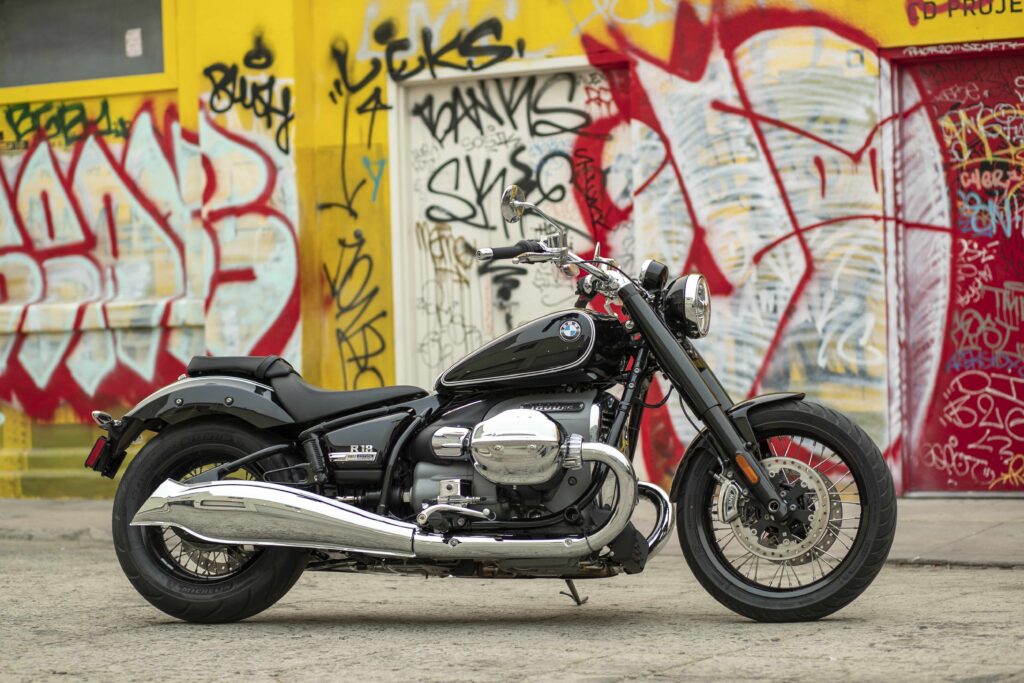
Long in the planning, the R18 owes its stylistic inspiration to the R5, a street model the company produced from 1936 to 1937. This provided the essentials: The boxer engine, double-loop tubular steel frame, exposed nickel-plated drive shaft, teardrop gas tank, fishtail exhaust pipes and signature black paint with double white pin stripes.
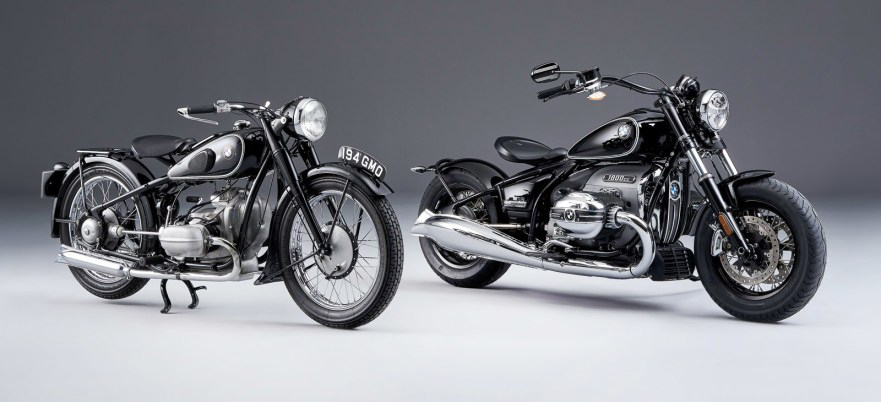
The bike draws its economic inspiration from elsewhere, and is the answer to a question many people have asked – many executives, anyway, if not many consumers. Like many companies, BMW has been wondering why Harley-Davidson dominates the cruiser market with what one BMW executive derided as a second-rate product – and trying to figure out how to take away some H-D market share. (And, of course, as its own fortunes have waned, H-D is trying to figure out how to take away some of BMW’s market share, by introducing its PanAmerica adventure bike into a segment dominated by GMW’s GS line.)
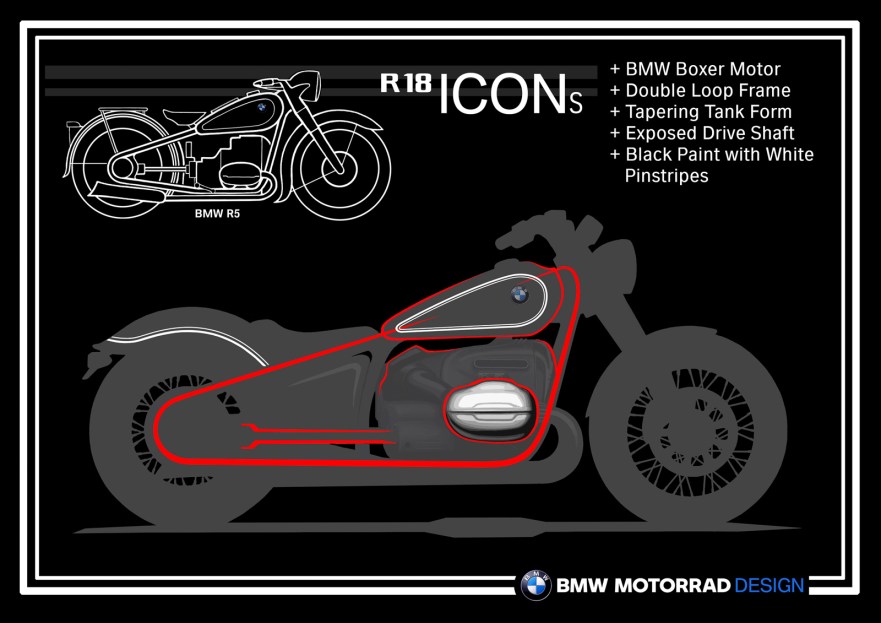
“Harley-Davidson runs this segment, but that’s changing,” BMW Motorrad US product manager Vincent Kung said during a live-streamed R18 presentation. “A new generation is coming in, a generation that’s thinking differently. They’re experiencing what I call ‘Harley fatigue.’”
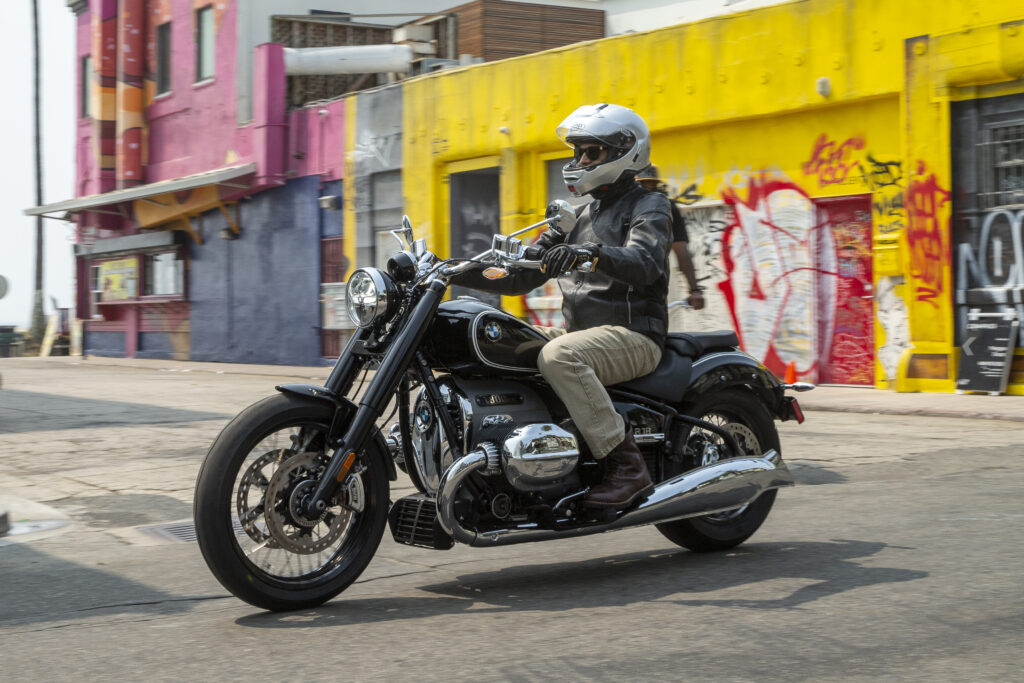
They also acknowledge that 75% of the hoped-for buyers will be “conquest” customers – buyers who will need to abandon another brand, many of them forgoing their wish to buy American, as first-time BMW owners.
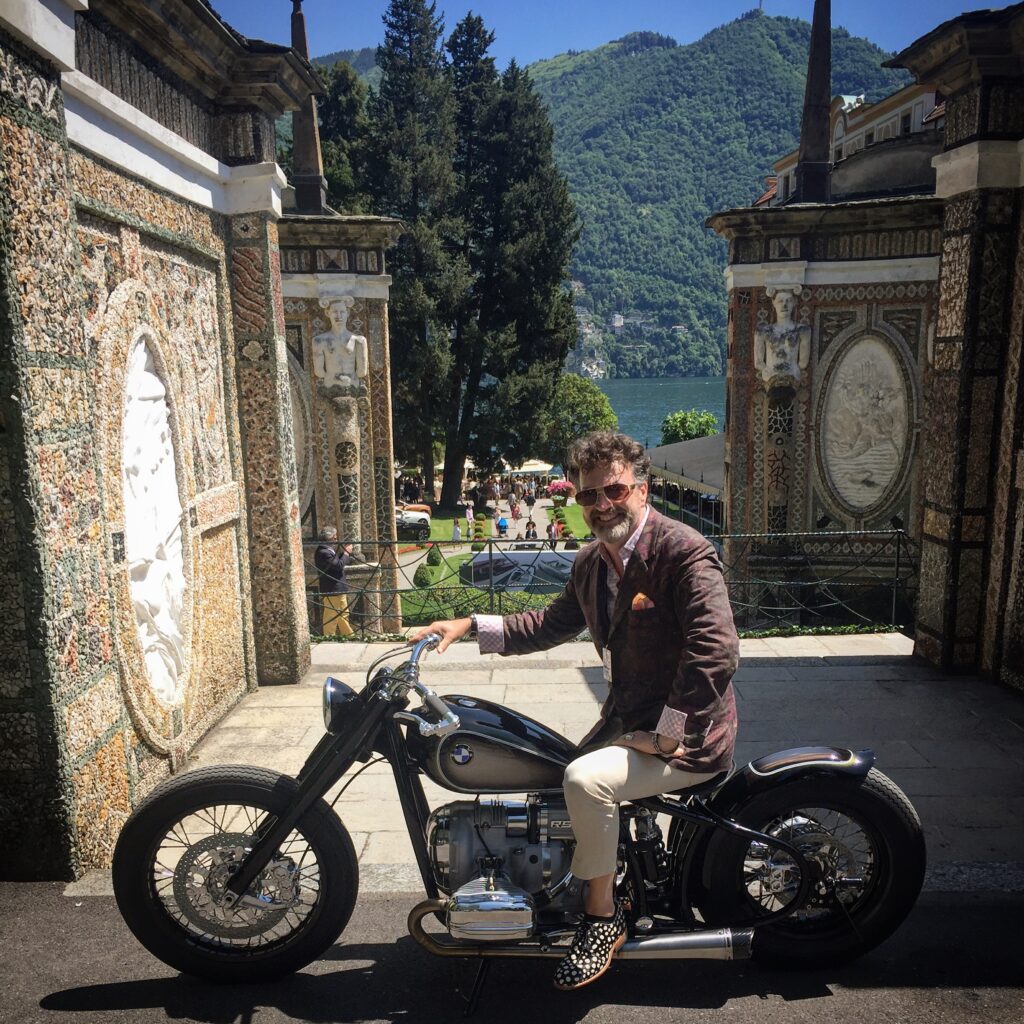
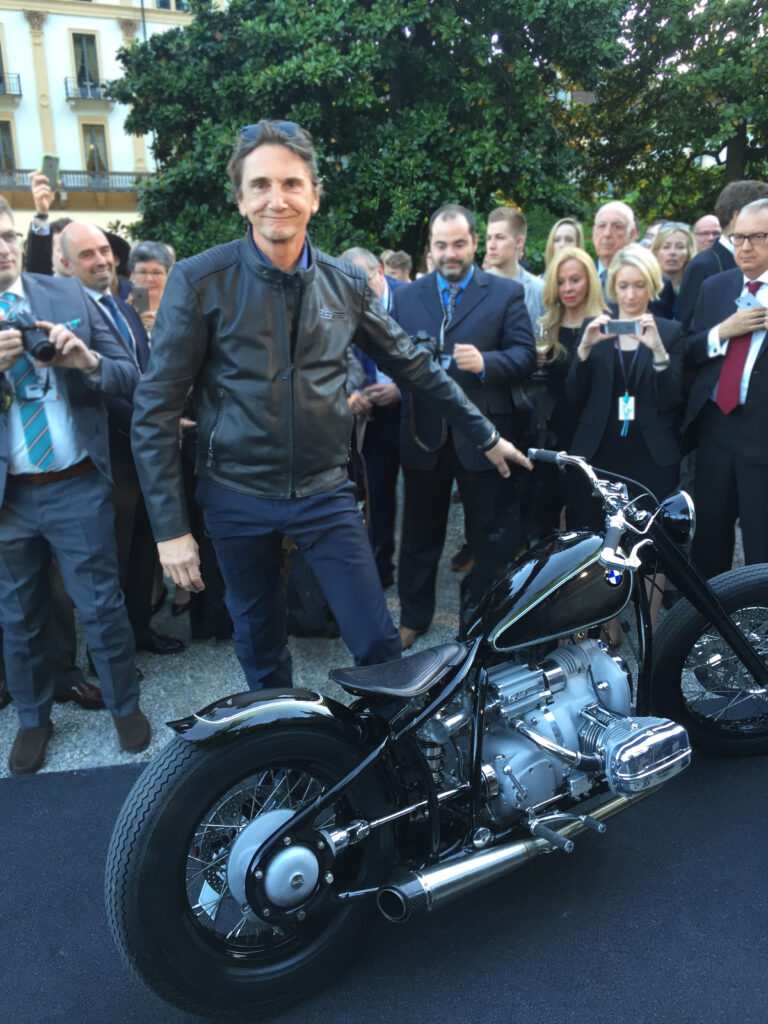
So, has it?
The bike is beautifully built – “Berlin made,” advertising material say, and it even says so on the speedometer – and beautiful to look at. The black is rich and deep. The chromed parts – the introductory model, known as the R18 First Edition, is laden with nearly $4,000 in upgraded bits and bobs – gleams. The look and feel of real metal abounds. There are no chromed plastic parts, anywhere on the bike. The fit and finish are BMW standard – superb. The overall look is trim and clean. There are practically no visible wires or cables.
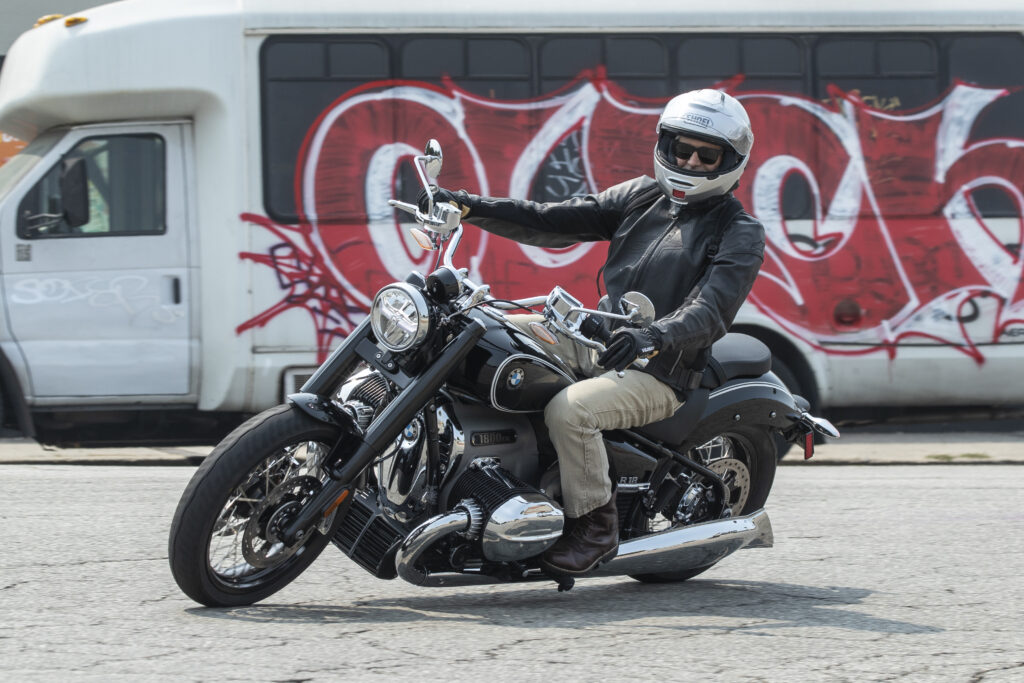
The engine rumbles to life, roughly, with a push of the electric start, and then settles into a gentle purr. A flick of the throttle produces the signature boxer roll. Clutch in, transmission engaged – with a reassuringly industrial “clunk” – and away.
Because it was clear from the start to the designers that their R18 must be powered by the company’s iconic horizontally-opposed twin-cylinder engine, it was also clear that the R18 could not feature the “foot forward” seating position favored by other cruisers. Instead, the R18’s builders placed its footpegs in a position they call “mid-mounted,” almost directly below the seat.
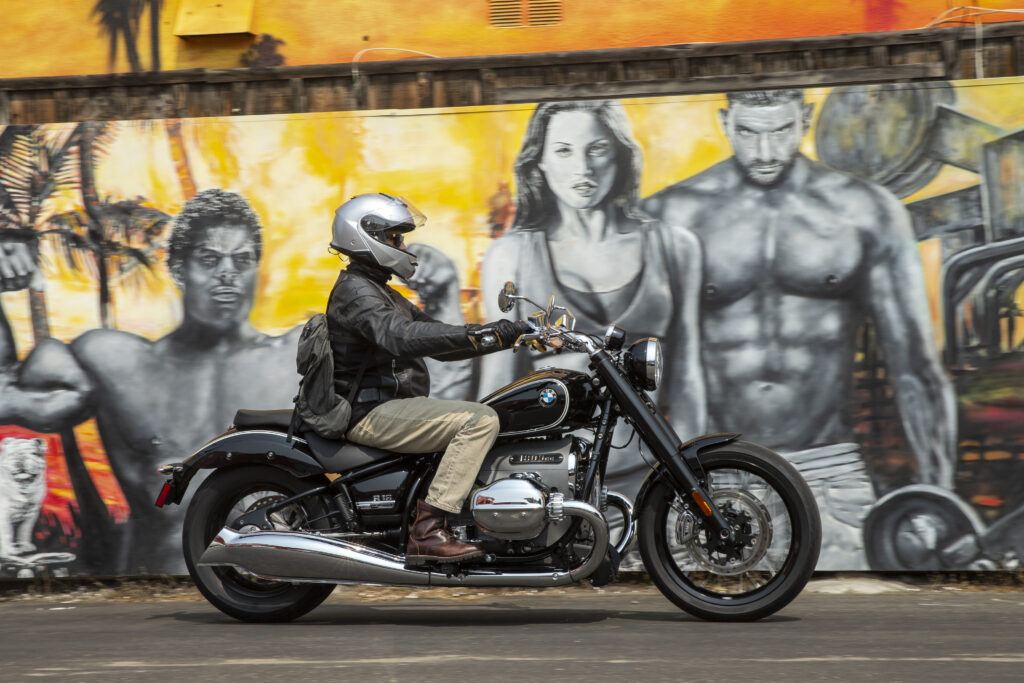
The massive R18 engine’s power is delivered via a six-speed transmission and through three ride modes. BMW, seeking to be clever, has named them Rock, Roll and Rain, with Rock being the most aggressive. Horsepower and torque remain the same with all three. Only the delivery of power is altered.
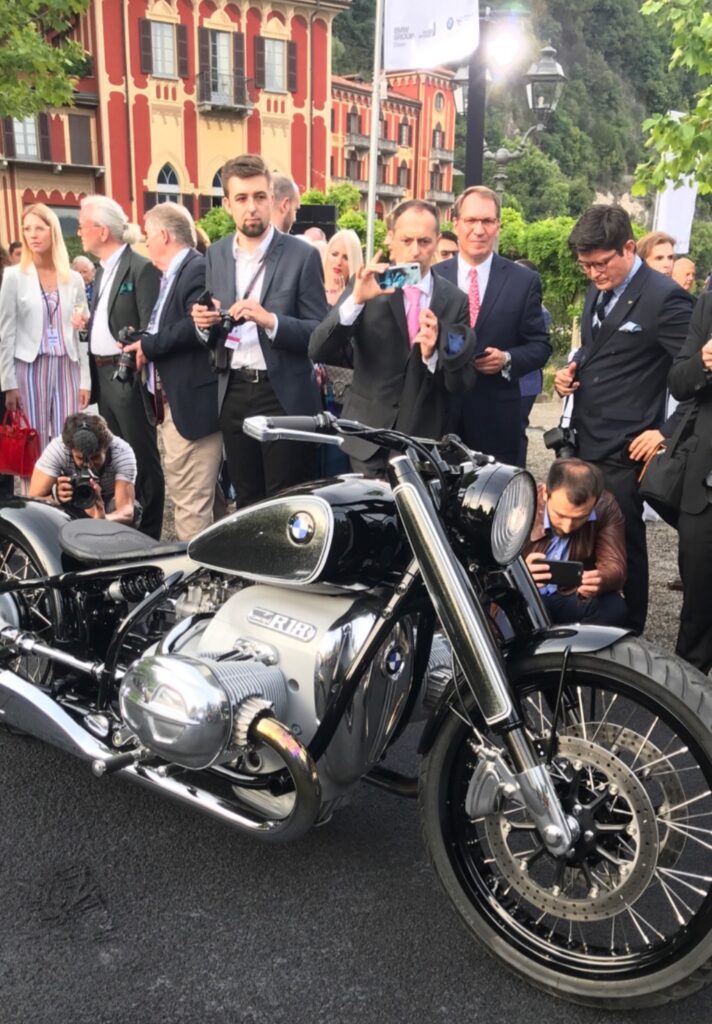
But it’s a big bike. Slow-speed maneuvering required some concentration. Stopping at red lights and stop signs became tedious. The mid-central footpegs required my foot to come up, out and back before they hit the ground, as the big boxer cylinders prevented any forward movement.
Parking was less of a challenge, because the R18 is fitted with a rudimentary reverse gear. Put the bike in neutral, pull a switch near the left-side footpeg, and use the starter button to engage an electric motor that rolls the machine backward.
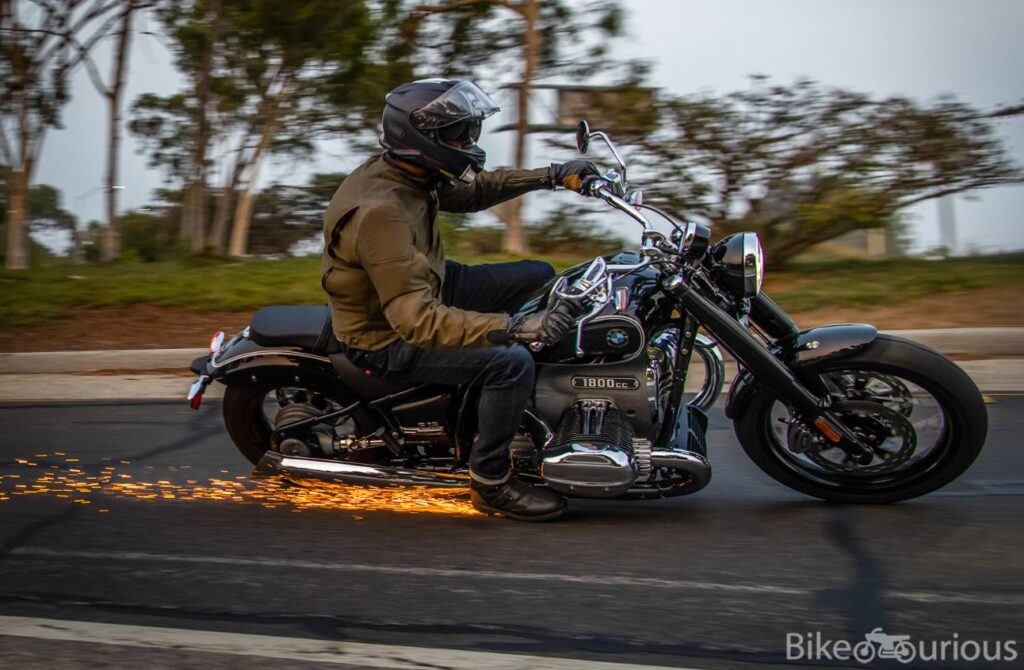
The oil- and air-cooling system limited engine heat. For Southern Californians, anyway, this is an issue. Many of the big twins, from most Harleys to most Indians and beyond, contribute so much ambient heat that riding them on hot days can be a challenge.
The longer I rode the R18 the more impressed I was by its craftsmanship, elegance and curb appeal. (I experienced more spectator attention — “Cool bike man!” — than on anything I’d ridden since the last quirky-looking Ural I piloted.) But I was happy to stop riding every time I stopped, and eager to dismount. By the end of the four-hour ride, I was ready to quit, which is exactly the opposite of how I feel at the end of most rides.
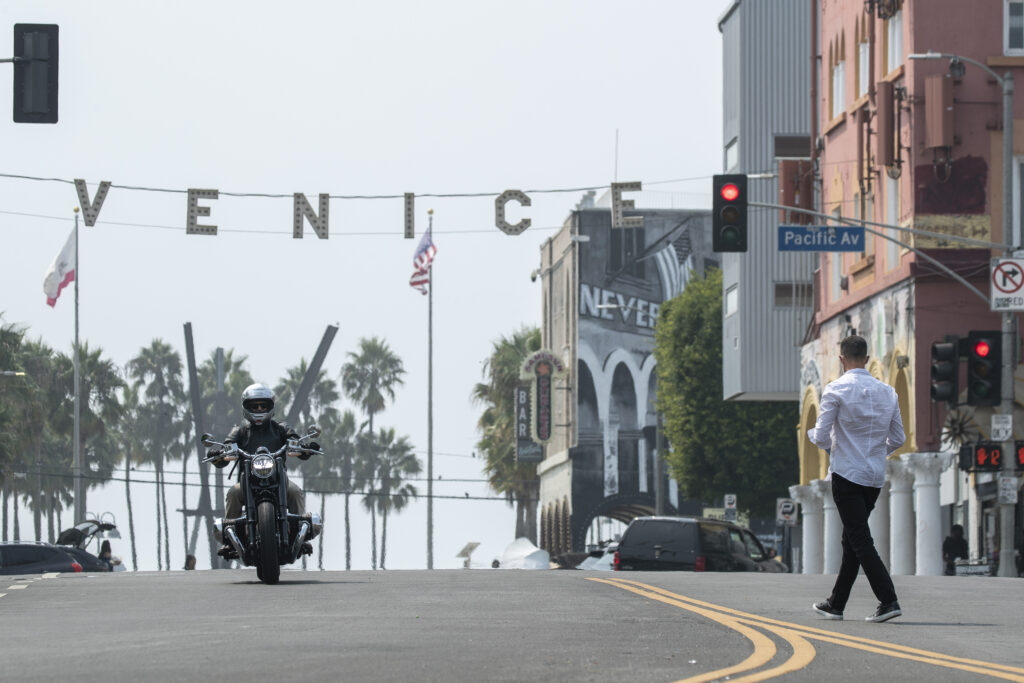
BMW has high hopes for the R18. The company’s CEO Markus Schramm said BMW Motorrad’s ambition is to “become number one in the premium cruiser segment worldwide.” Schramm said sales are strong, with a backlog of orders globally and the factory working at full speed to fill them.
It will be an interesting experiment. Though BMW posted record sales numbers for the month of June of this year, the six months before that saw a sharp decline, with numbers down from the comparable 2019 period by nearly 18%, according to company reports.
There was probably more reason for optimism, in June, that further prosperity was just around the corner. Now, with the coming of fall, the approaching of winter, the continuing financial uncertainty and the pending end of state and federal support for struggling businesses and unemployed workers, the R18 may have arrived just in time to sneak into 2020 before the year closes.
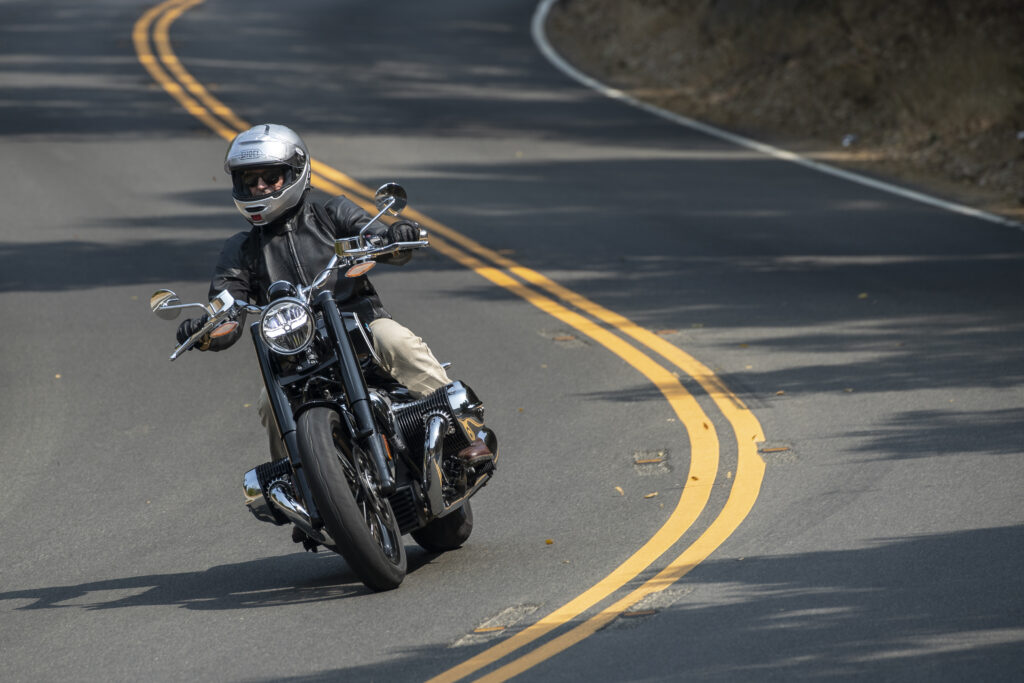
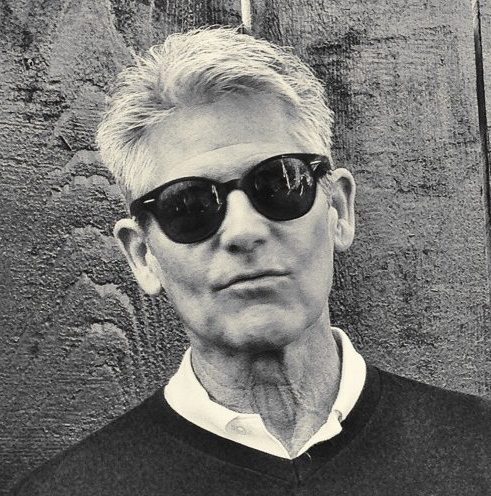
Related Posts
February 14, 2018
The Vintagent Selects: Josh Kurpius DKS! Harley Davidson Ambassador
DKS! went to Milwaukee, WI. to meet up…

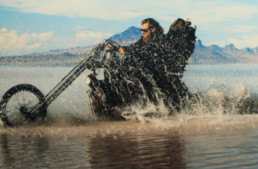
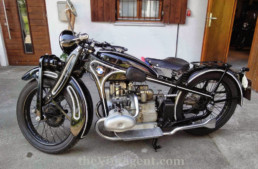
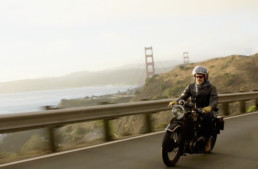
About the only thing I don’t like ( hate actually ) about the R18C…. is the entire back half of the exhaust pipe … which looks like a severe afterthought desperately trying to resemble … errr … a distended eel
( ok … in all honesty there’s the excess weight as well .. but seeing as how that seems to be thee way of things when it comes to cruisers in the 20th / 21st century …. oh well …)
I mean come on BMW … after all the incredible prototypes .. one off customs etc …. thats the best they can come up with ?
Seriously … for eh sake of sales ( potentially mine included ) lets hope there’s an optional or after market exhaust system available to rid this beauty of that extreme bit of … ugliness
PS; attn PdO …. your email address seems to of disappeared into my address book’s infernal digital void … can you email me via the email I use here so I can send you a photo of gramps in 1926 on his brandy spankin new H-D ?
FYI ; Panamera is a Porsche … PanAmerica is the new H-D ADV …. that … is news from the EU has any bearing .. may unfortunately end up a still born
Too true, corrected. Yes the news is mixed regarding the PanAmerica. Note the Charlie and Ewan rode Livewires pan-America, and their biggest challenge was not terrain but finding charging spots!
Paul – There are now three … count them … three docs on DW ( German TV ) exposing all the problems of recharging an EV … in GERMANY ( the EV capitol of the world ) even when you can find a charging station . A few examples ;
1) 80% of chargers on average at any given station are out of order .. making the chances of the charger that fits your vehicle working ( cause there’s no standard for EV charging ports ) next to nil
2) Even when the charger thats fits works … 60% of the time the unit will not fully charge your vehicle
3) Charger Apps that are supposed to help you locate a charger 65% of the time are inaccurate
4) 80% of al charger stations visited were poorly ( to not at all ) maintained
etc .. et al .. ad nauseam … in GERMANY … where government support and subsidies flow like water to the point of being forced on the public and manufactures
On the positive side … we caught these docs just as we were considering leasing ( ridiculously low rates right now ) an i3 for the wife . Suffice it to say … that idea got canned
So once again I’m of the opinion … that EV’s are simply not ready for prime-time … especially here in the US where EV’s now get ZERO (pun intended ) governmental support …. sigh …..
PS; I assume you’re referring to ” Long Way Up ” which I’ve yet to see ( cause its only on Apple TV.. I’s a poet and I don’t know it lol ) I cannot believe Ewan and Charlie were fools enough to try riding EV’s thru a continent with less than zero infrastructure and support … private , government or otherwise
Nothing should be easier to build, for BMW, as a flat twin, with classic lines, a decent sized motor, with a reasonably light weight, giving you a package that is pleasing to the eye, appears simple, and most importantly is fun to operate.
And then we have this, bloated, complex, heavy, motorcycle, that appears to have received a double beating with the ugly stick.
A motorcycle, whose only joy of ownership, would be buying it and throwing half of it away.
Why?
It’s very interesting to compare the scale of the R5 Hommage custom and the R18. As explained to me long before this project became metal, BMW’s target audience was older white male American riders who would normally buy a Harley-Davidson cruiser. Might as well put a Trump sticker on it too…(just kidding Edgar and Ola: please don’t).
R5 Hommage custom is nice looking motorcycle. R18 is really, really ugly looking motorcycle, imho.
Given the BMW market research mentioned, I wonder if building a newer version of the R80 g/s got a mention? A genuinely light, simple and reliable adventure bike, not like the modern GS at all. Even an updated Basic. Agree with your friend’s comment that the R18 is an answer to a quesion nobody asked.